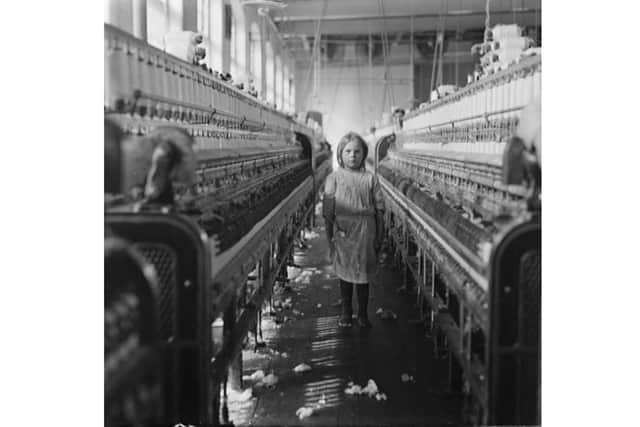New project reveals harrowing faces of Nidderdale’s forgotten children who lost their lives in cotton mills
and live on Freeview channel 276
The title of the project - 'Tired beyond all Telling’, is taken from a direct quote from one of the children who worked in the mills.
A paper published under the title has been nominated for an award for the Research Project of the Year, in the monthly magazine - Current Archaeology.
Advertisement
Hide AdAdvertisement
Hide AdThe research, led by Durham’s Professor Rebecca Gowland from the Department of Archaeology was in collaboration with Anwen Caffell from the University of York, and volunteer researchers at Washburn Heritage Centre, Fewston, near Harrogate.


The analysis discovered the skeletal remains of over 150 individuals, including an unusually large proportion of children aged between eight and 20 years.
Early analysis immediately identified the children as being distinctive from the locals, showing signs of stunted growth and malnutrition, as well as evidence of diseases associated with hazardous labour.
The team of scientists, working together with local historians were able to piece together the story of the forgotten children, transported from workhouses in London, and forced to work long hours in the mills, in the North of England.
Advertisement
Hide AdAdvertisement
Hide AdScientists at Durham undertook chemical analysis of teeth to establish whether children were local to the area or not.
Many apprentices found results consistent with those in London, which aligned with the historical records for the nearby Mill.
Innovative peptide analysis of the teeth also helped identify the sex of the children.
Examination of the bones and teeth also identified large numbers of disease all associated with millwork.
Advertisement
Hide AdAdvertisement
Hide AdThese included tuberculosis, and respiratory disease, diseases of deprivation such as rickets, and the delayed growth of the children.
The University of York undertook chemical analysis of the bones to study diet, finding that apprentices’ showed a lack of meat compared with the locals, similar to victims of the Great Irish Famine.
‘Remembering the forgotten’ is the study which provides a direct and compelling testimony of the impact of poverty, and factory labour on children’s growth, health, and mortality of the past.
The remains have now been reburied in a ceremony that involved contributions from the Washburn community, volunteer researchers, scientists, and descendants of those excavated.
Advertisement
Hide AdAdvertisement
Hide AdVolunteers from the Washburn Heritage Centre produced artwork inspired by the analysis which is now on permanent display in an exhibition at the Washburn Heritage Centre.
The exhibition includes a recreation of the heads of two of the named skeletons, whose descendants have been traced, and still live in the area.
The collection is known as ‘The Fewston Assemblage’ and has been acclaimed as ‘of international importance’ by archaeologists worldwide.
The power and purity of the River Washburn have been valued for centuries.
Advertisement
Hide AdAdvertisement
Hide AdEvidence of corn, fulling, cotton and flax mills is still visible in the form of leaves, goits and water holding dams.
Among the numerous mills in the Washburn Valley the Westhouse Mill at Blubberhouses was the most historically significant.
It was one of the first in England to use the apprentice system for its workforce and when it was built it had one of the largest water wheels in Europe.